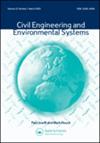通过可持续性的环境、社会和经济支柱来识别和评估绿色建筑的属性
IF 1.1
3区 工程技术
Q3 ENGINEERING, CIVIL
引用次数: 12
摘要
绿色建筑(GB)评级系统是用来衡量建筑的程度或可持续性水平的。重点关注那些需要更多成本,并对减少建筑对环境或自然的负面影响做出更大贡献的属性是非常重要的。本分析提出了一个基于思想的概念模型,通过考虑可持续建设的环境、社会和经济支柱或可管理发展的货币支柱,对国标属性进行优先排序。为了分析环境和社会本质属性,采用了层次分析法和熵值法。经济分析采用数据包络分析(DEA)。如果决策者更加重视可持续发展的环境和社会支柱,那么他们可以考虑诸如居住者的健康,安全和舒适,气候条件,投资成本,运营和维护成本以及室内空气质量等属性。如果建设利益相关者希望以有限的资金获得更多的绿色点,那么重要的属性是:运营维护成本、材料回收、低影响的施工现场技术、当地可用的材料和土壤污染。提出的方法可以促进GB建设实践,而这些实践不容易由传统实践产生。本文章由计算机程序翻译,如有差异,请以英文原文为准。
Identifying and evaluating green building attributes by environment, social, and economic pillars of sustainability
ABSTRACT Green building (GB) rating systems are developed to measure the level of extent or sustainability of buildings. It is very important to focus on the attributes that require more cost and are contributing more to decreasing the negative impact of construction on the environment or nature. This analysis presents an idea-based conceptual model for prioritising the GB attributes by considering the environmental, social, and economic pillars of sustainable construction or monetary mainstays of manageable development. To analyse the environmentally and socially essential attributes, an analytical hierarchy process (AHP) and an entropy method were used. For the economic analysis, a data envelopment analysis (DEA) was applied. If the decision makers give more importance to the environmental and social pillars of sustainability then they can consider the attributes such as occupants’ health, safety and comfort, climatic conditions, the cost of investment, operation and maintenance cost, and indoor air quality. If the construction stakeholder wishes to achieve more green points with limited funds then the important attributes are: operation and maintenance cost, material recycle, low-impact construction site techniques, locally available materials, and soil pollution. The proposed approach can advance GB construction practices that are not liable to result from conventional practices.
求助全文
通过发布文献求助,成功后即可免费获取论文全文。
去求助
来源期刊

Civil Engineering and Environmental Systems
工程技术-工程:土木
CiteScore
3.30
自引率
16.70%
发文量
10
审稿时长
>12 weeks
期刊介绍:
Civil Engineering and Environmental Systems is devoted to the advancement of systems thinking and systems techniques throughout systems engineering, environmental engineering decision-making, and engineering management. We do this by publishing the practical applications and developments of "hard" and "soft" systems techniques and thinking.
Submissions that allow for better analysis of civil engineering and environmental systems might look at:
-Civil Engineering optimization
-Risk assessment in engineering
-Civil engineering decision analysis
-System identification in engineering
-Civil engineering numerical simulation
-Uncertainty modelling in engineering
-Qualitative modelling of complex engineering systems
 求助内容:
求助内容: 应助结果提醒方式:
应助结果提醒方式:


